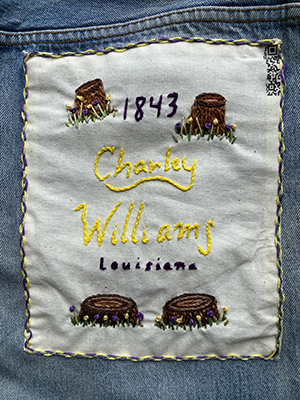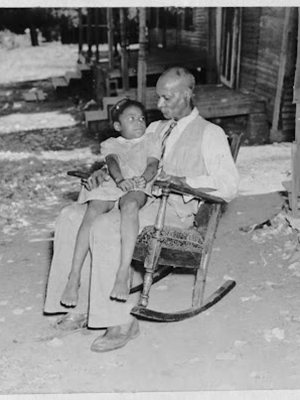Charley Williams
“I was born on the eleventh of January in 1843. My master’s name was John Williams. The plantation was about as big as any. I think it had about 300 acres, and it was about two miles northwest of Munroe, Louisiana. Our plantation was up on higher ground, and it was more open country, but still there was lots of woods all around and lots of the plantations had been whacked right out of the new ground and was full of stumps. When the day begin to crack, the whole plantation break out with all kinds of noises, and you could tell what was going on by the kind of noise you hear. Of course, you can’t hear the shoemaker awling and pegging, and the card spinners and the old mammy sewing by hand, but maybe you could hear the old loom going “frump, frump” and then you know you’re all right if your clothes are wearing out, because you’re going to get new britches pretty soon.” – Charley Williams
 Liam Delaney ’26
Liam Delaney ’26
Since the mid-1600s, enslaved Africans were brought to transform the landscape of America. They did the backbreaking work of clearing the land of rocks and trees so it could be made into farms. In the South, enslaved people sculpted waterways, drained swamps, and built dams and levees for rice plantations.
The connection between slave labor and environmental concerns continues to this day. Kevin Bales, author of Blood and Earth: Modern Slavery, Ecocide and the Secret to Saving the World, said in a 2016 interview: "These two problems, this ancient and terrible problem of slavery and this newer concern that we have about climate change, are actually so tightly linked together that the solutions are fitting both of them. Slave labor is often used to cut down the world's forests. If you put the resources into just ending the slavery, one of the things that would happen would be illegal deforestation would come to an end, thus enforcing laws against slave labor would reduce carbon dioxide emissions, the key culprit behind global warming.”

Organizations like the Rainforest Action Network and Conservation International continue to put pressure on banks and companies invested in supporting modern slavery and deforestation.
Sources
- National Humanities Center
- The Center for Law and Social Policy
- Society for Conservation Biology
- “Links between slavery, environmental damage are cause for hope, author argues.” Reuters, January 20, 2016